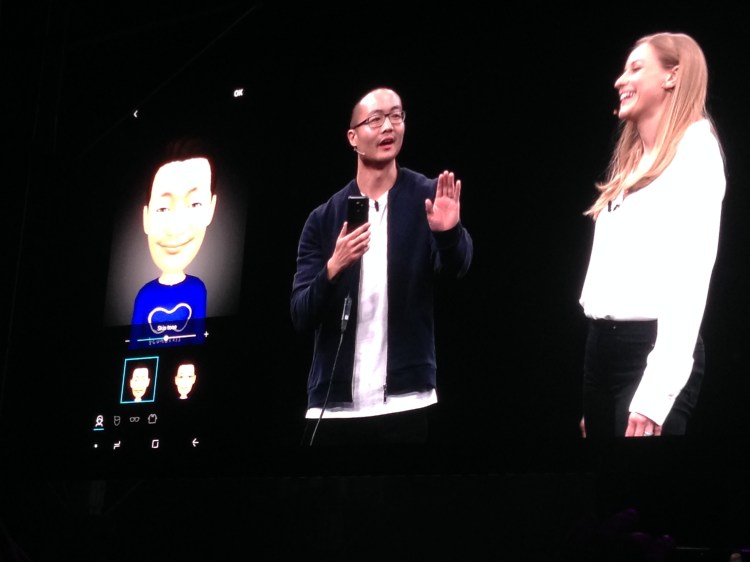Until now, Samsung’s mixed reality efforts have been largely focused on virtual reality headsets such as Gear VR and the Odyssey HMD, but the South Korean company will dive deeper into augmented reality this week, Variety reports. During its annual developers conference in San Francisco, the company plans to unveil a new AR cloud service currently known as Project Whare Cloud, and might also preview a new AR headset.
Project Whare Cloud won’t be the company’s first foray into AR, but it appears to be a considerably broader effort than what came before. Samsung previously introduced AR Emoji on its Galaxy phones, enabling people to replace their faces with Snapchat-style cartoony graphic overlays including personalized and Disney/Pixar characters — a very basic implementation of AR.
By contrast, Whare is an effort to enable multiple AR developers, devices, and users to access shared information and virtual assets placed in the real world. The concept is apparently to create a Samsung-specific collection of AR content that can persist beyond individual users opening separate apps. In May, Google introduced similar functionality in ARCore 1.2 with Cloud Anchors, which work across Android and iOS devices, and Apple followed in June with rival ARKit 2.0 features to support multi-user access to AR data, as well as cross-platform assets.
Samsung reportedly sees the conference as an opportunity to gently roll out the feature. One of the scheduled sessions offers developers an opportunity to meet the team behind Project Whare Cloud, “learn how easy it is to bring AR into your existing mobile apps built in Unity,” and “learn how to enhance their apps with persistence and multi-user capabilities using Project Whare.”
According to the report, Samsung isn’t planning to limit its AR initiative to its phones; it has a “full-blown AR headset” in the works, though it’s apparently unfinished, and if shown at the conference will likely be only a prototype. It’s unclear whether developers will be able to test AR apps on headsets or use a VR headset such as Odyssey+ for prototyping; the just-released HMD includes twin external cameras and a “flashlight” mode that could be used to offer basic augmented reality functionality if properly programmed.

